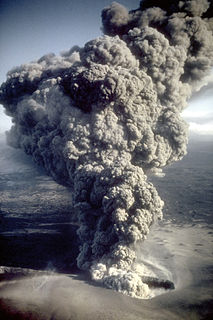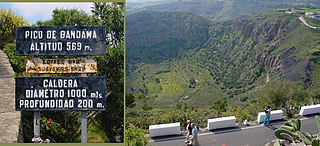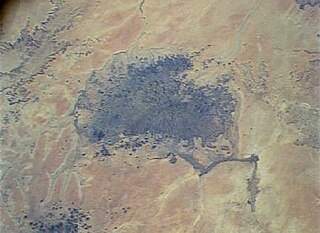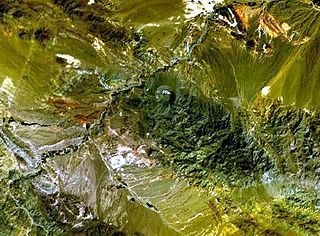 W
WA maar is a broad, low-relief volcanic crater caused by a phreatomagmatic eruption. A maar characteristically fills with water to form a relatively shallow crater lake which may also be called a maar. The name comes from a Moselle Franconian dialect word used for the circular lakes of the Daun area of Germany.
 W
WAl Wahbah Crater, also Maqlaʿ Ṭamiyyah, is a volcanic crater, which is about 250 kilometres away from Ta'if, on the western edge of the Harrat Kishb basalt plateau in the Hejazi region of Saudi Arabia. The Harrat Kishb plateau contains many volcanic cones. It is 250 m (820 ft) deep and 2 km (1.2 mi) in diameter. The bottom of the crater is covered with white sodium phosphate crystals.
 W
WThe Bandama Natural Monument is part of the Tafira Protected Landscape on the island of Gran Canaria in the Canary Islands, Spain. It's considered a point of geological interest, because of the Caldera de Bandama. This volcanic crater, which is geologically a maar rather than a caldera, reaches 569 m (1,867 ft) above sea level at the highest point on its rim, Pico de Bandama, and is about 1,000 m (3,300 ft) wide and 200 m (700 ft) deep.
 W
WEl Elegante is a maar located in the Gran Desierto de Altar in the Sonoran Desert, Mexico.
 W
WThe Oriental Basin, also known as the Libres-Oriental Basin, Oriental-Serdán Basin or San Juan Plains is an endorheic basin in east-central Mexico. It covers an area of 4,958.60 square kilometers, lying in the states of Puebla, Tlaxcala, and Veracruz.
 W
WLake Ram is a crater lake (maar) in the northeastern Golan Heights, near Mount Hermon, in Israel. Josephus knew it by the name Lake Phiala. The sources of the lake are rain water and an underground spring. The lake has no outlet. It is known in Hebrew as "Brekhat Ram", meaning high pool. It is also called Birket Ram, using the Arabic word for pond. The area is inhabited by the Druze community.
 W
WMarsabit is a 6300 km2 basaltic shield volcano in Kenya, located 170 km east of the center of the East African Rift, in Marsabit County near the town of Marsabit. This was primarily built during the Miocene, but some lava flows and explosive maar-forming eruptions have occurred more recently. At least two of the maars host crater lakes.
 W
WMeidob volcanic field is a Holocene volcanic field in Darfur, Sudan. It is one of several volcanic fields in Africa whose origin is explained with the activity of mantle plumes and their interaction with crustal structures. Meidob lies at the southern margin of the Sahara.
 W
WQal'eh Hasan Ali is a maar-producing volcanic field located southeast of Kerman Province, Iran. The field is presumed of Quaternary age, though it has produced no historic eruptions. Consisting of 14 maars each of different size, its most significant crater is Great Crater, about 1.2 kilometres (0.75 mi) in width and 200–300 metres (660–980 ft) in depth.